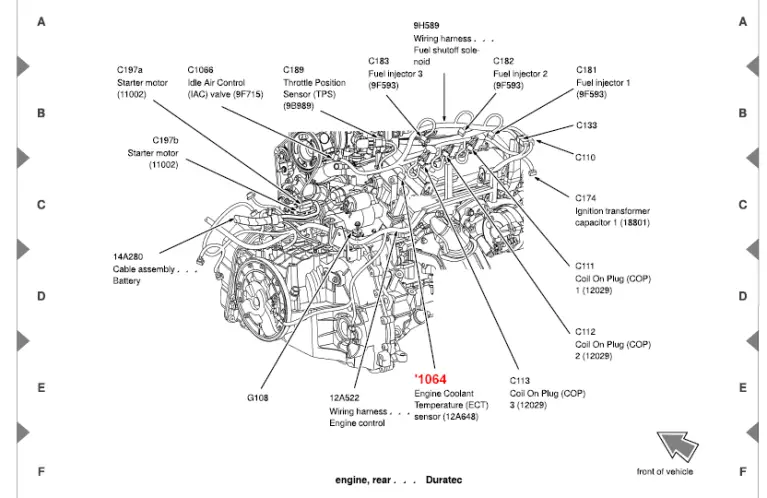How Much Is A New Transmission For A Ford F150
Last Updated on by David Jon
In examining the pressing question of transmission costs for the iconic Ford F150, it’s critical to understand that several factors influence these numbers. By offering answers curated for Ford owners, DIY enthusiasts, mechanics and anyone interested in Ford vehicle maintenance, this article offers a holistic overview. From types of transmissions to labor and the actual parts involved, we’ll offer a comprehensive breakdown enabling our readers to have clear cost estimates. An essential read for anyone looking to gain insights into transmission repair or replacement for a Ford F150.

Understanding Ford F150 Transmission
The transmission is a pivotal component of any vehicle, and the Ford F150 is no exception. It plays an instrumental role in powering the vehicle and dictating its performance.
Basics of the transmission system
A vehicle’s transmission is essentially its powerhouse. It is an intricate system that manages the power generated by the engine, aptly channeling it to the Ford F150’s wheels to drive the truck forward. Facilitating smooth and controlled movements while optimizing the engine’s performance are the transmission system’s most significant functions.
Role of the transmission in a Ford F150
The transmission of the Ford F150 holds an essential responsibility in the efficient functioning of the vehicle. It ensures the effective and seamless transfer of the engine’s power to the drive axle, facilitating smooth acceleration, efficient fuel use, and optimal vehicle handling. Without a well-functioning transmission, your Ford F150 would be far less responsive and fuel-efficient.
Types of transmissions used in Ford F150
Ford F150s typically come with either a manual or automatic transmission. Manual transmissions, where the driver shifts gears manually, provide a more engaging driving experience. Comparatively, automatic transmissions offer a more convenient ride, switching gears automatically based on speed, vehicle load, and other factors.
Factors That Influence the Cost of a New Transmission
Several factors contribute to the cost of a new Ford F150 transmission. Minor repairs may be affordable, but a full transmission replacement can be a substantial financial commitment.
Importance of make and model year
A significant factor that influences cost relates to the specific model and make year of your Ford F150. As technology advances, newer vehicles increasingly feature more complicated and advanced transmission systems, which can fetch a higher replacement cost.
Type of transmission: Manual vs. Automatic
The type of transmission — manual or automatic — also matters. Generally, automatic transmissions are costlier than their manual counterparts, given their more complex design and operation.
Brand-original vs. aftermarket parts
Choosing between original equipment manufacturer (OEM) parts and aftermarket parts impacts the cost as well. OEM parts, while generally more reliable and better quality, are typically more expensive than equivalent aftermarket parts.
Cost of Labor
Labor costs can vary significantly based on your location and the mechanic or garage you choose. High-end service providers will often charge more for their experience and reputation.
Estimated Cost of a New Ford F150 Transmission
Replacing your Ford F150’s transmission can be a substantial expense, with costs often running into the thousands.
Range of Prices
Price ranges for a new Ford F150 transmission can fluctuate significantly, generally falling between $1800 and $3500. Transmission prices depend on a host of factors, such as your truck model year, the type of transmission, and whether you opt for new, rebuilt, or remanufactured parts.
Breakdown of Costs
The breakdown of costs for a new Ford F150 transmission usually includes parts and labor. Parts often represent the bulk of the cost, especially if you opt for brand-new, OEM components. However, labor costs should not be underestimated, especially for extensive repairs.
Ways to potentially lower costs
One can lower these costs by choosing remanufactured or aftermarket parts instead of OEM parts, doing some of the work yourself (if you have the skills and tools), and shopping around for quotes from different service providers.

Dealing with a Failing Ford F150 Transmission
Understanding the warning signs of a failing transmission and dealing with them promptly can help avoid more serious and costly repairs down the line.
Warning signs of a failing transmission
Warning signs of a failing transmission include difficulty shifting gears, strange noises like humming or clunking, slippage between gears, and a burning smell. Another sign is if the check engine light is on, which demands immediate attention.
Advantages of prompt transmission repair
Diagnosing and repairing a failing transmission as soon as problems emerge can save us from more costly repairs or replacements later. Additionally, it can dramatically increase your Ford F150’s lifespan and ensure optimal performance and fuel efficiency.
The Process of Transmission Replacement
Replacing a vehicle’s transmission is a complex and time-consuming process requiring specialized knowledge and skills.
Overview of the process
A transmission replacement typically involves removing the old transmission, preparing the new or rebuilt transmission, and installing it. Depending on the nature of the issue, it may also require replacing associated components, such as the clutch or torque converter.
Level of expertise required
Due to the complex nature of transmissions, it is recommended to have a trained and experienced mechanic handle replacements. Attempting to perform a transmission replacement without the requisite skills and knowledge can lead to more costly damage or compromised safety.
Time required for Replacement
A full transmission replacement can take a considerable amount of time, often from several hours to a full day or more.
Understanding Warranty Aspects
Understanding the warranty terms that come with your new transmission can help ensure you’re covered if problems arise down the line.
Understanding the importance of warranty
A warranty can provide peace of mind when investing in a costly component like a transmission. It ensures that you’re protected from manufacturing defects or issues that arise from proper use.
Warranty details for new transmissions
New transmissions usually come with a warranty, with terms varying based on the manufacturer. A typical warranty might cover your transmission for a certain number of years or miles, with some offering coverage for both.
How to make use of your warranty
To exercise your warranty, ensure you follow the terms and conditions set by the manufacturer — including properly maintaining your transmission. If a problem arises, contact the provider promptly to initiate a repair or replacement.
Why Opt for a New Transmission
Choosing to replace your Ford F150’s transmission can carry various benefits, including enhanced vehicle performance and dependability.
Benefits of a new transmission
Buying a new transmission guarantees you get a part without wear and tear. New transmissions come with the latest technology, offering better fuel efficiency, performance, and lifespan.
Comparison of new vs. used transmissions
While used transmissions may appear more affordable upfront, they may not provide the same dependability or longevity as their new counterparts. A new transmission also offers the benefits of a warranty, providing protection against defects and issues.
Long-term costs and implications
While a new transmission represents a significant investment, it can reduce long-term repair and maintenance costs. Plus, it ensures superior vehicle performance.
Preventative Maintenance for Ford F150 Transmissions
Routine checks and proper maintenance can drastically extend the lifespan of your Ford F150 transmission.
Routine checks and services
Maintaining your transmission involves regular inspections and fluid changes per the manufacturer’s recommendations. Keeping an eye on your transmission’s condition can help you spot issues early and avoid major repairs.
Gearing for Maximum Transmission Lifespan
Tariffs such as letting your truck warm up before driving in cold weather, avoiding heavy loads, and not riding your clutch can help prolong your transmission’s lifespan.
Benefits of Regular maintenance
Regular maintenance reduces wear and tear on your transmission, helping to avoid serious problems and prolong the life of your vehicle. It also ensures optimal fuel efficiency and performance.
Exploring Financing Options
Transmission replacements can be hefty investments, and exploring different financing options can help offset the immediate financial burden.
Credit card payments
Many service providers accept credit card payments, enabling you to pay back the amount over time. However, you’ll need to consider the potential interest charges.
Financing through repair shops
Some repair shops offer their financing schemes, which can be helpful for costly repairs. These options often include interest-free or low-interest periods.
Insurances covering replacement costs
If your car insurance includes transmission repairs, it can cover a significant portion of the replacement costs. It’s best to check your policy’s details or speak with your insurance provider.
Significance of Professional Installation
Getting your new transmission installed by a professional is incredibly important. It saves time, ensures correct installation, and comes with a host of additional benefits.
Advantages of professional installation
Professionals possess the necessary skills, knowledge, and experience to install your transmission correctly. They can tackle challenges that may arise during the process and can guarantee the quality of their work, helping you avoid additional costs of fixing improperly completed jobs.
Comparison between DIY vs. professional installation
While DIY installation may seem cost-saving, the likelihood of making mistakes is high due to the complexity of the process. In contrast, professionals guarantee accuracy and can often complete the work more efficiently.
Finding a reputable mechanic or repair shop
When choosing a service provider, it’s essential to check their reputation, experience, and customer reviews. You can also ask for recommendations from friends or family. By choosing wisely, you help ensure a successful and quality transmission replacement.



